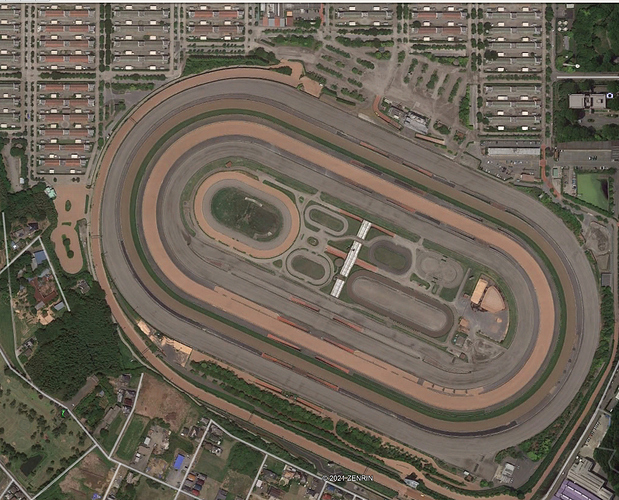So I fly regularly through Tokyo for work, and our landing approach to Narita takes us over these facilities, and I always wondered what they are. I suspected some kind of horse facility but they seemed so massive that I doubted that. So on my last trip a couple of weeks ago, here’s the pic I took from the plane, and using landmarks in the photo, I managed to find it on Google Earth to zoom in.
I was wrong to doubt myself–turns out it’s a Japan Racing Association training facility. Stable capacity of over 2,300 horses, on 550+ acres. And check out the variety of tracks.
I know nothing about the Japan racing scene (is it high quality? horribly abusive? I have no idea) but regardless, this facility is pretty mind-boggling.
(Anyone else have the habit of scanning the area that you’re flying over, to spot horse properties?  )
)


